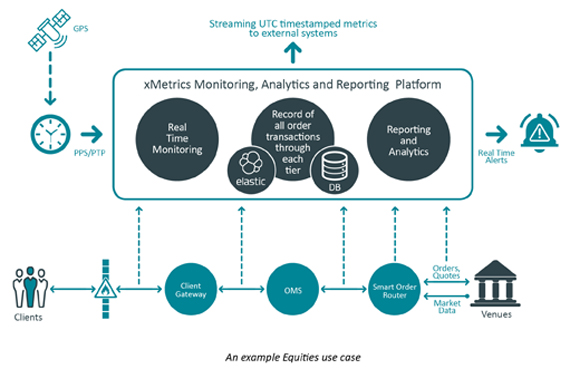xMetrics® provides key data and functionality for compliance with:
• RTS-6 Algorithmic Trading
• RTS-7 Trading Venues
• RTS-22 Reporting of Transactions
• RTS-24 The maintenance of data
• RTS-25 The level of accuracy of business clocks
• RTS-27 Data to be published by Venues on quality of execution
• RTS-28 Information to be published by Investment Firms on quality of execution
Financial institutions face mounting pressure to comply with a raft of global regulatory requirements aimed at improving transparency, oversight and control over trading and business operations, to reduce risk and improve the stability of the markets.
Where MiFID I impacted equities trading, MiFID II extends to all asset classes, across multiple jurisdictions and time zones. Buy-side and sell-side trading firms and venues must meet the MIFID II requirements that demand transparency, best execution, transaction reporting, record keeping, client order handling, and more....
• RTS-6 Algorithmic Trading
• RTS-7 Trading Venues
• RTS-22 Reporting of Transactions
• RTS-24 The maintenance of data
• RTS-25 The level of accuracy of business clocks
• RTS-27 Data to be published by Venues on quality of execution
• RTS-28 Information to be published by Investment Firms on quality of execution
Financial institutions face mounting pressure to comply with a raft of global regulatory requirements aimed at improving transparency, oversight and control over trading and business operations, to reduce risk and improve the stability of the markets.
Where MiFID I impacted equities trading, MiFID II extends to all asset classes, across multiple jurisdictions and time zones. Buy-side and sell-side trading firms and venues must meet the MIFID II requirements that demand transparency, best execution, transaction reporting, record keeping, client order handling, and more....
Transparency is required across transaction monitoring and performance, with firms needing to accurately timestamp and make information available to regulators, either continuously for transaction reports or in response to unplanned ‘spot checks’. The new requirements dictate that trading information will need to be stored and be made immediately accessible for five years and accountability cannot be outsourced.
At the heart of these requirements is a need for clean, verified, easily accessible, current and historical (five years) trading data. Given the asset class multiplying effect, monitoring, tracking, alerting and reporting non-linear transaction data in real time is a huge challenge for firms using highly distributed platforms, this, coupled with often-siloed technology teams and processes further increases the level of difficulty.
The Xmetrics® platform provides a fully independent and integrated solution for the capture of all application network and transaction data required for ESMA RTS reporting, evaluation and storage which can be easily deployed without the need to overhaul existing IT infrastructure.
At the heart of these requirements is a need for clean, verified, easily accessible, current and historical (five years) trading data. Given the asset class multiplying effect, monitoring, tracking, alerting and reporting non-linear transaction data in real time is a huge challenge for firms using highly distributed platforms, this, coupled with often-siloed technology teams and processes further increases the level of difficulty.
The Xmetrics® platform provides a fully independent and integrated solution for the capture of all application network and transaction data required for ESMA RTS reporting, evaluation and storage which can be easily deployed without the need to overhaul existing IT infrastructure.

